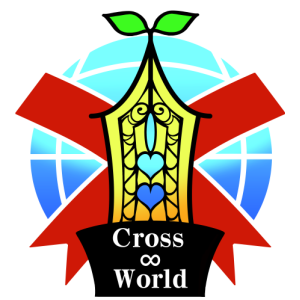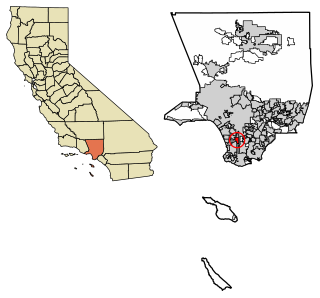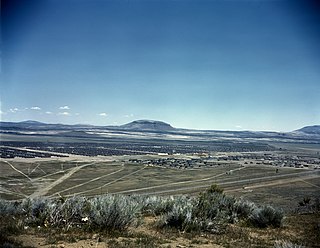 W
WAfuri is a chain of ramen restaurants, based in Tokyo, Japan.
 W
WThe California Alien Land Law of 1913 prohibited "aliens ineligible for citizenship" from owning agricultural land or possessing long-term leases over it, but permitted leases lasting up to three years. It affected the Chinese, Indian, Japanese, and Korean immigrant farmers in California. Implicitly, the law was primarily directed at the Japanese. It passed 35–2 in the State Senate and 72–3 in the State Assembly and was co-written by attorney Francis J. Heney and California state attorney general Ulysses S. Webb at the behest of Governor Hiram Johnson. Japan's Consul General Kametaro Iijima and lawyer Juichi Soyeda lobbied against the law. In a letter to the United States Secretary of State, the Japanese government via the Japanese Minister of Foreign Affairs called the law "essentially unfair and inconsistent... with the sentiments of amity and good neighborhood which have presided over the relations between the two countries," and noted that Japan felt it was "in disregard of the spirit of the existing treaty between Japan and the United States." The law was meant to discourage immigration from Asia, and to create an inhospitable climate for immigrants already living in California.
 W
WCamp Tulelake was a federal work facility and War Relocation Authority isolation center located in Siskiyou County, five miles west of Tulelake, California. It was established by the United States government in 1935 during the Great Depression for vocational training and work relief for young men, in a program known as the Civilian Conservation Corps. The camp was established initially for CCC enrollees to work on the Klamath Reclamation Project.
 W
WThe Castroville Japanese Language School, also known as the Castroville Nihon Gakko, is a historic building located at 11199 Geil St. in Castroville, California that is listed on the National Register of Historic Places (NRHP).
 W
WHanford is a commercial and cultural center in the south-central San Joaquin Valley and the county seat of Kings County, California, United States. It is the principal city of the Hanford-Corcoran metropolitan area, which encompasses all of Kings County, including the cities of Hanford and Corcoran. The ZIP Code is 93230. The city of Hanford is surrounded by communities that do not fall within the city limits but share the same ZIP Code. These communities include Grangeville, Hardwick and Home Garden.
 W
WCross Infinite World is a California-based language localization company specializing in Japanese to English translation and publication of Japanese media such as light novels and manga.
 W
WG.T. Marsh and Sons, also known as Marsh's Oriental Art Store, is a historic building in Monterey, California that is listed on the National Register of Historic Places. It was listed on the National Register in 2007; the listing included one contributing building and one other contributing structure.
 W
WGardena is a city located in the South Bay region of Los Angeles County, California, United States. The population was 58,829 at the 2010 census, up from 57,746 at the 2000 census. Until 2014, the US census cited the City of Gardena as the place with the highest percentage of Japanese Americans in California. Gardena's Japanese American population contributes to the South Bay region of Los Angeles being home to the largest concentration of Japanese companies within the mainland United States.
 W
WThe Go for Broke Monument in Little Tokyo, Los Angeles, California, commemorates Japanese Americans who served in the United States Army during World War II. It was created by Los Angeles architect Roger M. Yanagita whose winning design was selected over 138 other submissions from around the world.
 W
WThe Harada House is a historic house in Riverside, California. The house was the focus of a critical application of the California Alien Land Law of 1913, which prevented foreigners who were ineligible for citizenship from owning property. The state of California attempted to seize the property from the family in California v. Harada, but the Haradas ultimately won the case and retained ownership of the house. The house, created in 1884 and built upon by the Harada family, was declared a National Historic Landmark in 1990 and is currently overseen by the Museum of Riverside.
 W
WHayward is a city located in Alameda County, California in the East Bay subregion of the San Francisco Bay Area. With a population of 162,954 as of 2020, Hayward is the sixth largest city in the Bay Area and the third largest in Alameda County. Hayward was ranked as the 34th most populous municipality in California. It is included in the San Francisco–Oakland–San Jose Metropolitan Statistical Area by the US Census. It is located primarily between Castro Valley, San Leandro and Union City, and lies at the eastern terminus of the San Mateo–Hayward Bridge. The city was devastated early in its history by the 1868 Hayward earthquake. From the early 20th century until the beginning of the 1980s, Hayward's economy was dominated by its now defunct food canning and salt production industries.
 W
WThe Isleton Chinese and Japanese Commercial Districts is located in Isleton, California in the Sacramento–San Joaquin River Delta, a large agricultural area in Sacramento County, California. Also known as the Isleton Asian American District, it served as the commercial and social center for both the town's Chinese and Japanese residents and the laborers working in nearby canneries, farms, and ranches. Isleton Asian American District is the only Asian community built in the Delta during the 1920s, and the architectural style of the buildings in the districts, particularly the use of pressed tin siding, is unique to other Delta Asian communities and to the town of Isleton.
 W
WThe Japanese American Museum of San Jose (JAMsj) is located at 535 N. Fifth Street in San Jose, in the heart of Japantown. The museum's mission is to collect, preserve, and share Japanese American art, history, and culture with an emphasis on the Greater San Francisco Bay Area.
 W
WJapantown, commonly known as J Town, is a historic cultural district of San Jose, California, north of Downtown San Jose. Historically a center for San Jose's Japanese American and Chinese American communities, San Jose's Japantown is one of only three Japantowns that still exist in the United States, alongside San Francisco's Japantown and Los Angeles's Little Tokyo.
 W
WKoyasan Beikoku Betsuin , also known as Koyasan Buddhist Temple, is a Japanese Buddhist temple in the Little Tokyo district of Downtown Los Angeles, California, United States. Founded in 1912, it is one of the oldest existing Buddhist temples in the North American mainland region. The temple is a branch of Koyasan Shingon Buddhism and is the North America regional headquarters for the school.
 W
WLeimert Park is a neighborhood in the South Los Angeles region of Los Angeles, California.
 W
WLittle Tokyo also known as Little Tokyo Historic District, is an ethnically Japanese American district in downtown Los Angeles and the heart of the largest Japanese-American population in North America. It is the largest and most populous of only three official Japantowns in the United States, all of which are in California. Founded around the beginning of the 20th century, the area, sometimes called Lil' Tokyo, J-Town, 小東京 (Shō-tōkyō), is the cultural center for Japanese Americans in Southern California. It was declared a National Historic Landmark District in 1995.
 W
WManzanar is the site of one of ten American concentration camps, where more than 120,000 Japanese Americans were incarcerated during World War II from March 1942 to November 1945. It is located at the foot of the Sierra Nevada mountains in California's Owens Valley, between the towns of Lone Pine to the south and Independence to the north, approximately 230 miles (370 km) north of Los Angeles. Manzanar means "apple orchard" in Spanish. The Manzanar National Historic Site, which preserves and interprets the legacy of Japanese American incarceration in the United States, was identified by the United States National Park Service as the best-preserved of the ten former camp sites.
 W
WMarukai Corporation U.S.A. is an American offshoot chain of retail markets that imports and sells Japanese goods in American cities started by the Osaka, Japan-based Marukai Corporation (Japan). Unlike other Japanese supermarkets, which may carry non-Japanese products based on local diversity, Marukai has Hawaiian products as a core focus in addition to Japanese in all its stores. Its headquarters are in Gardena, California, in Greater Los Angeles.
 W
WMikawaya is an American confectionery producer specializing in Japanese pastries, snacks, and desserts. The company's products include traditional wagashi, as well as newer offerings, such as mochi ice cream. Mochi ice cream, which was created by Mikawaya's former CEO and President Frances Hashimoto, now represents the majority of Mikawaya's annual sales.
 W
WMitsuwa Marketplace is a Japanese supermarket chain in America, with locations in California, Illinois, Texas, Hawaii, and New Jersey.
 W
WNijiya Market is a Japanese supermarket chain in America, with locations in California and Hawaii. Its corporate headquarters is in Torrance, California. The store's rainbow logo is intended to represent a bridge between Japan and the United States.
 W
WThe Nippon Hospital is a historic hospital building located at 25 S. Commerce St. in Stockton, California. The hospital, which was built in 1919, served the Japanese community in Stockton, which at the time had one of the largest Japanese populations in the United States. Tokutaro Matsumoto, a farmer from the area, sponsored the hospital, which was proposed by a local Japanese community association. The hospital operated until 1930, when it became a hotel. The building is the only surviving structure from Stockton's early Japanese community.
 W
WNishiyamato Academy of California is a private Japanese international day school for students from pre-kindergarten through 9th grade, offering a Japanese guideline-based curriculum. The co-educational academy consists of a kindergarten, an elementary school division, and a middle school division with approximately 150 students, all located in Lomita, California, in the Los Angeles metropolitan area. Since March 1996, the academy has been authorized by Japanese Ministry of Education and its successor Ministry of Education, Culture, Sports, Science and Technology (MEXT) as a Private Overseas Educational Facility .
 W
WThe Tule Lake National Monument in Modoc and Siskiyou counties in California, consists primarily of the site of the Tule Lake War Relocation Center, one of ten concentration camps constructed in 1942 by the United States government to incarcerate Japanese Americans forcibly removed from their homes on the West Coast. They totaled nearly 120,000 people, more than two-thirds of whom were United States citizens.
 W
WVisalia Buddhist Church is a Buddhist temple in Visalia, California. It is an affiliate of the Buddhist Churches of America.